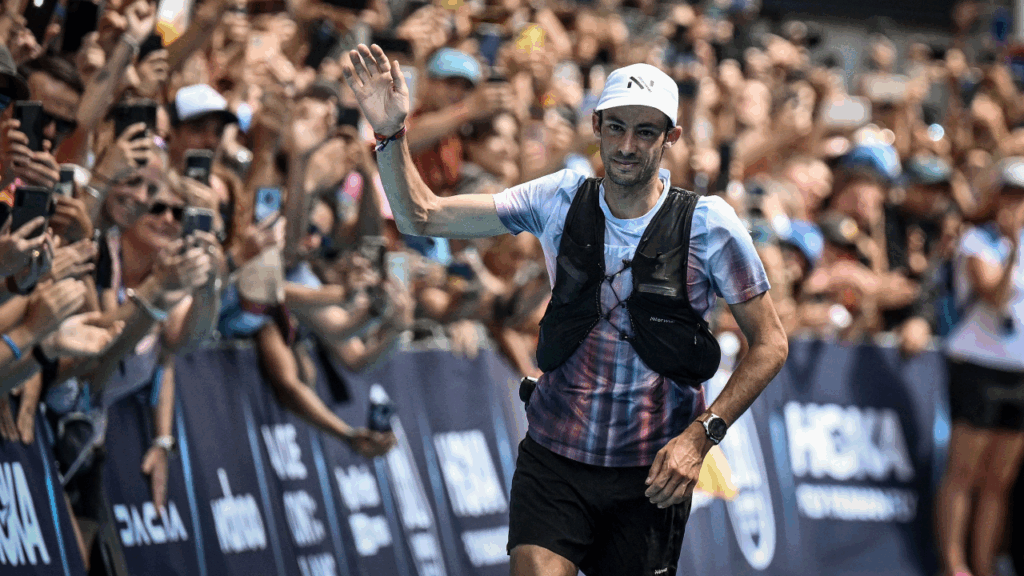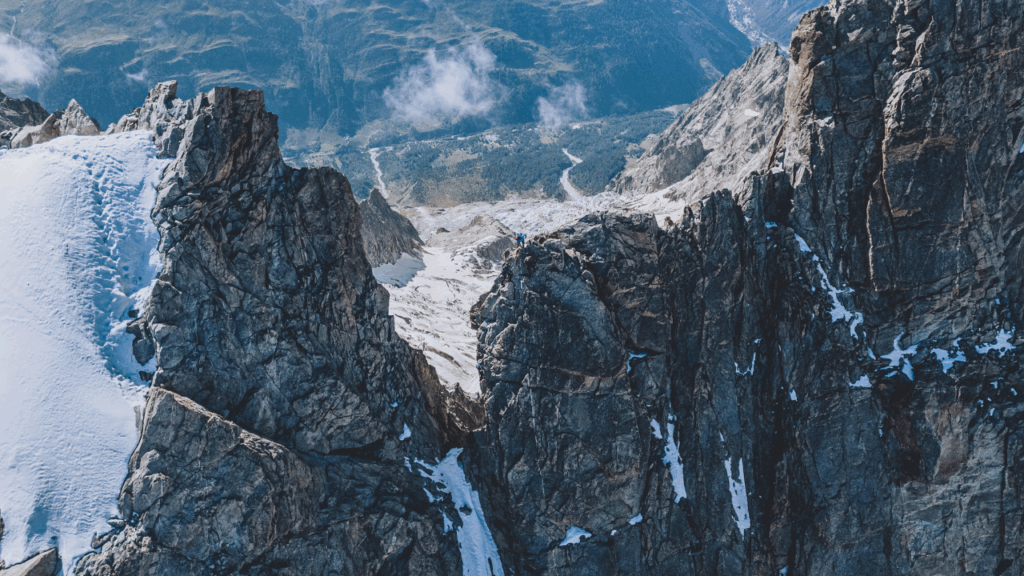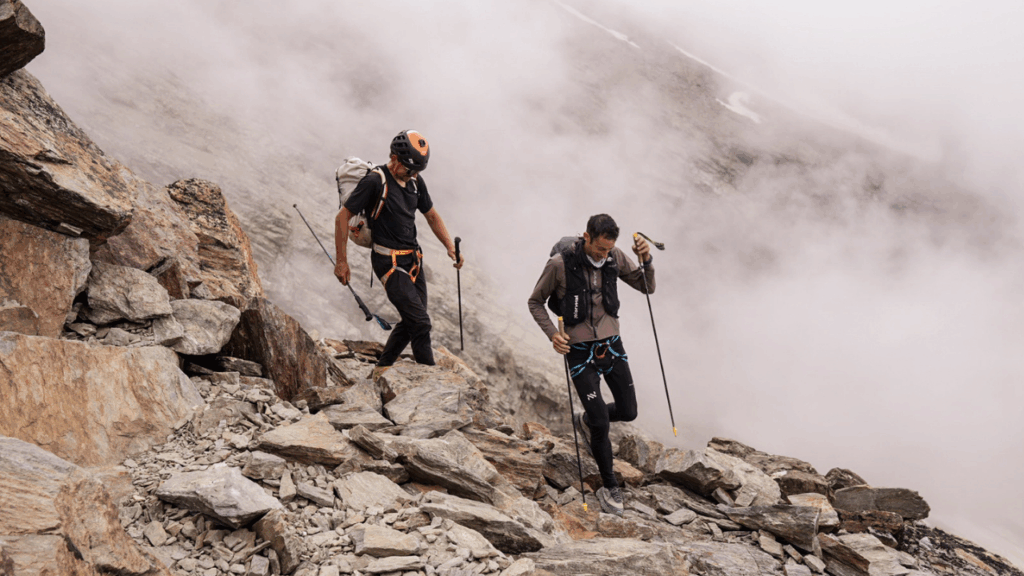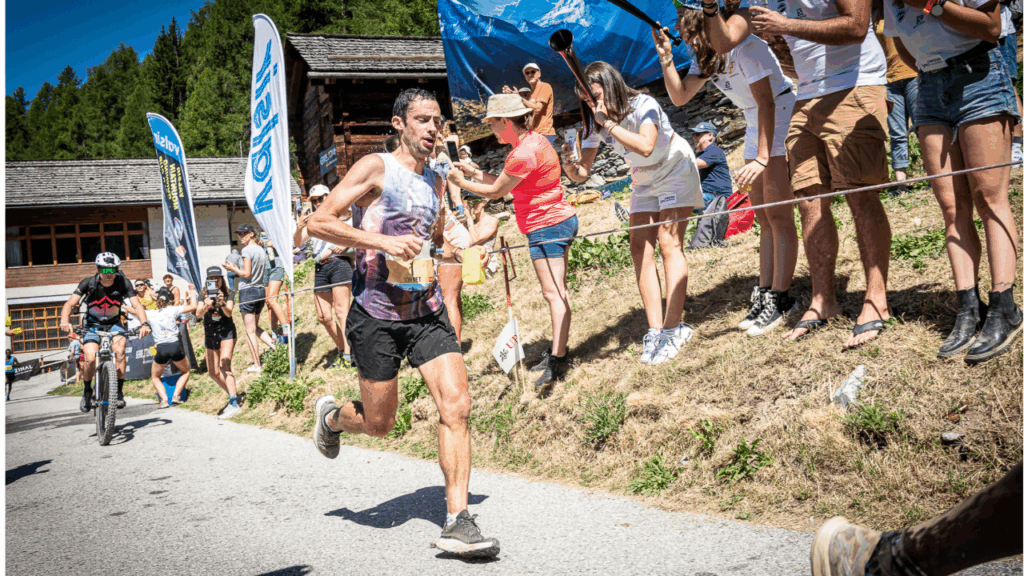Kilian Jornet is not like the rest of us. In fact, he’s not like anyone at all. He’s living his best life, trail racing, mountaineering, and embellishing the primal existence of his youth.
Kilian Jornet is not like the rest of us. In fact, he’s not like anyone at all. He’s a unicorn in human form, prancing through the mountains to his heart’s content.
That’s pretty obvious when you consider his long list of accomplishments in the trail running and mountaineering realms, but it becomes more clear the more you know about him. And what you come to realize is that he’s just living his best life, embellishing the primal existence of his youth.
We might not have grown up in the mountains with parents who were ski instructors or mountain guides, but we can all appreciate and be inspired by Jornet’s approach to doing extraordinary things and apply it to our own trail running endeavors.
The 37-year-old Spanish athlete has become a living legend in the outdoor and endurance sports worlds at a time when the depth of those communities and level of performance has never been greater. Yet, even amid the global rise of hundreds of mountaineering and trail running athletes and personalities, he’s still largely considered a one-of-a-kind—the undisputed GOAT—who not only remains at the top of his game, but is continuing to expand the limits of what’s possible by doing things no one has ever thought about before.

When I first heard that he was going to attempt to link a bunch of 14,000-foot peaks in Colorado in September, I figured he was going to make an attempt at the fastest known time (FKT) on Nolan’s 14—the daunting 100-mile line of 14 peaks and 44,000 feet of vertical gain that requires considerable trail running, scrambling, and mountaineering skills. Or perhaps go after the speed record for summiting all 58 of Colorado’s 14ers in a little more than nine days.
Yet when he told me back in June about what he actually intended to do in September—a massive journey to link all of the 14,000-foot peaks in the lower 48 states via human-powered travel across three of America’s most iconic mountain ranges in a project dubbed States of Elevation—I was still admittedly a bit astonished.
But having watched him plan, train for, and pull off amazing feats for more than 16 years—some firsthand, some from afar—I know I shouldn’t have been. Thinking way outside the box, and meticulously taking on extraordinary challenges in the mountains with a sense of honor, respect, and humility is what Jornet has been all about since he was a young boy growing up in the Pyrenees mountains.
So when he announced recently that he’d be running, hiking and scrambling up and over all of the 14ers in the lower 48 states of the U.S.—nearly 70 peaks in Colorado, California, and Washington—and linking them by riding a bike between trailheads, it made perfect sense.
Jornet has never been limited by what to others might seem impossible. But what has always struck me about Jornet is that he never leads with his ego or a sense of bravado, but always with a sincere heart full of grace and gratitude. He’s not engaging in these crazy adventures or winning races to show the world he can do it or to build notoriety for himself, he’s doing it to forge a deeper connection and more conscious relationship with the natural world. That’s what makes him feel alive, just as it did when he was a kid.

Coming less than three months after his third-place finish at the Western States 100, Jornet says this new project is a test of self-reliance and sustainability and a unique exploration of the American West.
“I’m excited to discover not only the geography of all these mountains and the textures of the mountains, but also the culture of the land—the native places, the public lands, the wilderness areas, and even seeing some of the private lands,” he said about the States of Elevation project. “So I hope, through this geological journey, to discover the culture of the American West. It’s not to try to do all the summits as fast as possible, but to try to find the beautiful aesthetic lines in between.”
Jornet is part modern athlete who operates on the cutting edge of gear, training methodology, and nutritional science, but he’s also part old-school mountain sage who’s deeply immersed in the natural beauty of the routes (and races) he engages in.
In modern trail running, where there is such a hyper-focused fascination about the promotion of FKTs, race results, and assortment of other accomplishments—and, yes, Jornet has won most of the world’s prominent trail races and set numerous FKTs in the past 15 years—his motivation, even when going fast, has always been about immersing in the spirit and meaning of the mountains he’s moving in. And that’s a refreshing contrast to the typical “bigger, better, faster, more” vibe of some athletes and personalities. He finds great value in exploring the history, the culture, the people, and the communities connected to the peaks, ridgelines, and valleys of those rugged routes.
For him, it’s never been about reaching a summit or a finish line, but both the spectacular and mundane moments of the journey to get there, and, when possible, sharing it with others. Jornet’s grounded approach offers inspiration we can all apply to our trail running endeavors, however humble they might seem.

And to be fair, Jornet, like the rest of us, is only human. He’s become beatable in races, even if still not very often. He’s started to feel his age, even if the rest of us can’t see it. He used to race dozens of times annually, but now limits himself to just a few racing efforts and one enormous project every year.
But as he’s aged, he admits he’s spent more time focusing on recovery and systemic health—knowing that races and big training days are exhilarating, but consistent training, eating well, resting and balancing it all with work and family are what make it all sustainable.
“It’s nice to see that, even with aging, I’m able to perform better than before,” Jornet said. “These things I do are just for the fun of it. I love training. I love to see how much I can push and, and most of all, it’s the lifestyle of training that I love. Races are a very easy carrot that you put in front of you to be motivated.”
Last year, when Jornet pulled off his biggest feat yet—the Alpine Connections challenge—it reminded me that we’re all only limited by our own imagination and willingness to work for something—knowing that we’re all capable of more than we think we are if we only lean into courage and give ourselves a chance.
In that epic odyssey, he summited all 82 peaks over 4,000 meters (13,123 feet) in Europe’s Alps, covering 750 miles and climbing 72,000 vertical feet in 19 days without using any form of a motorized vehicle. To put it greater perspective, he summited 15,777-foot Mont Blanc twice while thousands of runners were running in the grueling UTMB races on the trails down in the valleys below.
“It’s not about using every resource that we have available to do it, it’s about the journey,” Jornet said.
“We have technology to do everything very fast. We could take a chopper and go to the summit of Everest, and we would be at the summit of Everest, but what does it mean to climb the mountain? What does it mean to link up those summits?
“In most of the projects that I try to do in the mountains, it’s always about trying to see if, if I am able to do it with my capacities, not about what I can bring to get this connection, but instead to be as naked as possible with nature, with the mountains.”
Most of us probably won’t summit most of the American 14ers or maybe won’t ever run a 100-mile race, but there are plenty of ways we can all be inspired by who Kilian Jornet is, what he’s doing, and how he does it.
